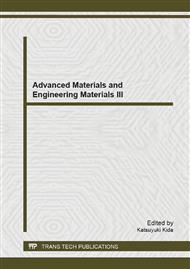p.492
p.496
p.500
p.504
p.508
p.512
p.519
p.524
p.528
Influences of Different Surface Treatments on Titanium Substrate to HA/TiO2 Bioactive Coatings
Abstract:
The porous titanium alloy containing 17.5 wt% molybdenum elements prepared by gel-casting methods was used as precursor. The composite coatings with hydroxyapatite and TiO2 prepared on the precursor was treated respectively by NaOH solution, 30% H2O2+NH3 solution, HF+HNO3 and PdCl2 solution to improve the characterization of coatings. The microstructure was examined by SEM, and part of the coatings was examined by EDS to indicate the linear distribution of HA and TiO2. The corrosion behavior of the coatings in the simulated body fluids (SBF) was evaluated by potentiodynamic polarization test and impedance plots. The results showed that the corrosion resistance of the coatings treated with PdCl2 solution was better than the others. The passivation layer which played a key role in corrosion resistance was generated by PdCl2 solution treatment; their surface morphologies was more uniform than the others and had no crack; the thickness of the coatings was 60~70μm.
Info:
Periodical:
Pages:
508-511
Citation:
Online since:
February 2014
Authors:
Price:
Сopyright:
© 2014 Trans Tech Publications Ltd. All Rights Reserved
Share:
Citation:


